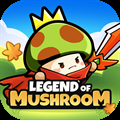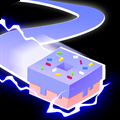Dungeons & Dragons: How To Run Baldur's Gate 3's Astarion As An NPC

Quick Links
- Flexible Canon Or Specific Version
- What Role Should An NPC Astarion Play?
- What Level Should an NPC Astarion be?
Baldur's Gate 3 has done a powerful job of propellingDungeons & Dragons to a new phase of public consciousness. New and returning players coming out of Baldur's Gate may wish to see a continuation of the characters' adventures and write new stories beyond the end of the game.
RelatedDungeons & Dragons: 5 Tips For Running Mind Flayer Encounters
They are coming for your party!
PostsAstarion is one such character, with a strong albeit polarising presence in the game's fandom. The broody vampire managed to capture and break many hearts among the fanbase and people who played as him may also enjoy including him as a legacy character present in tabletop campaigns, the same way a former PC might be used.
Flexible Canon Or Specific Version
Due to the nature of Astarion as both a playable character in the game and a NPC that players are able to strongly influence through dialogue, there are multiple ways his story can end in Baldur's Gate and this will determine what role an NPC version might take.
The version of Astarion found in a player's epilogue may be an ascended vampire with an army of thralls or a rogue mindflayer who instigated a Githyanki civil war. There are a few ways of approaching this flexibility:
Solution
Consequences
Events from his backstory are treated as canon but the events of Baldur's Gate 3 have not happened.
This gives you a very specific and stable version of the character to create stories out of, but also one that the players familiar with him will know the least about. Astarion prior to the game was a thrall with very limited agency and this means he will be a very different character to the version most people traveled with.
A specific version of the plot of Baldur's Gate 3 happened.
As a DM you will need to make the authoritative decision that one ending is canon within your game. You might negotiate this with your players by discussing what decisions people made at key points of the story (whether he embraced mindflayer transformation for example).
A vague version of the plot to Baldur's Gate 3 happened, but no specific details are mentioned.
This allows some degree of the best of both worlds but still requires you to make certain decisions (whether he is a mindflayer or ascendant vampire being the big two as these cannot be easily concealed). This approach also allows you to avoid spoiling events of the game to your players, by not making specific references to the events of the game.
In all three cases the information the DM holds as canon may not be publicly known to the extent that unrelated adventurers (such as the player characters) know the full details.
What Role Should An NPC Astarion Play?
Van Richten's Guide To Ravenloft Cover Art by Anna PodedwornaAstarion's role as a non-good character in Baldur's Gate, along with the potential to nudge him closer towards evil or good mean that different versions of his character can play very different roles in a tabletop game. This gives you options as to what role you want him to play:
Role
Antagonist
An ascended vampire with thousands of thralls is a threat able to change the fate of the Forgotten Realms. Such as character could easily take on the role of a campaign's main antagonist.
Quest giver
A good way of including favourite characters without letting them steal too much spotlight from the players is to have them as quest givers. An Astarion after the events of BG3 may be searching for an alternate cure to his sunlight sensitivity or even his vampirism.
Mentor
Retired player characters are well suited to becoming mentors to a following generation of adventurers. Choose an area that it makes sense for Astarion to be a mentor in, such as thievery, vampire lore, or illithid psionics.
A mentor does not need to be specifically training one of the PCs but may just be an expert the PCs have on hand, similar to the contacts provided by backstories such as criminal and courtier.
DMPC or supporting party member
DMPCs refer to PCs controlled by the dungeon master. They can be difficult to pull off well since the DM is playing both parts of the character and the world responding to them, drawing away the spotlight from the players.
DMPCs work best in a small party where there are some skills the party does not have but needs somebody to do, such as healing or crafting. An Astarion DMPC might handle intrigue related skill checks in a party lacking a rogue or bard that is able to handle the task.
What Level Should an NPC Astarion be?
There are several considerations to make when constructing the statblock for an NPC based on a former PC.
A general adage among Dungeon Masters is to not give character levels to anything you aren't willing to let your players kill.
NPCs not intended for the players to fight against or alongside are often not given full statblocks for this reason, even if they canonically would be able to fight: A DM might note their modifiers for several important skills they have, or a few spells they would have prepared but not give them a definitive statblock.
For Astarion, those relevant skills could be related to his backstory prior to the game or to the class the DM gave him while playing.
The Digital Deluxe version of the game comes with prebuilt character sheets of each of the origin characters at level one. These can be used to help make certain decisions about how they may function as NPCs.
Astarion is proficient in deception, history, acrobatics, perception, and persuasion while being having expertise in sleight of hand and stealth. These skills translate well into a Mentor or Quest giver NPC but doesn't work well if you plan to use him as an antagonist, when the characters will eventually have to fight him.
As an antagonist or other NPC that will appear regularly in combat, you will want to create a more traditional statblock. As an antagonist you can give him a greater number of vampiric powers that would have been unbalanced to give to a level one PC in the video game, along with their associated weaknesses.
While perhaps not on the same level as Strahd Von Zarovich, other vampire stat sheets can give a good indication of what powers a powerful vampire would have access to:
- Regeneration while not in sunlight or running water. The amount will be determined by the desired challenge level of the encounter, but a rule of thumb might be to regenerate roughly equal to the CR rating in hitpoints.
- Legendary Resistance is an important feature to give any powerful enemy the players fight, preventing the combat from being ended by a single strong spell.
- Vampiric movement abilities: Examples include the ability to spider climb (either with or without keeping both hands free), the ability to cast Misty Step without a spell slot, and the ability to change into a form with flight such as a mist or a bat.
- Access to vampire themed spells, such as Vampiric Touch or Animate Dead .
Some groups may want a higher level ally or mentor to be closely involved in the adventure, but others will prefer otherwise.
The extent to which high level NPCs are interacting with the world around the players is an important topic to bring up in a session zero: Some players will fear it undermines the narrative stakes of failure or defeat if high level NPCs are closely following the party.













